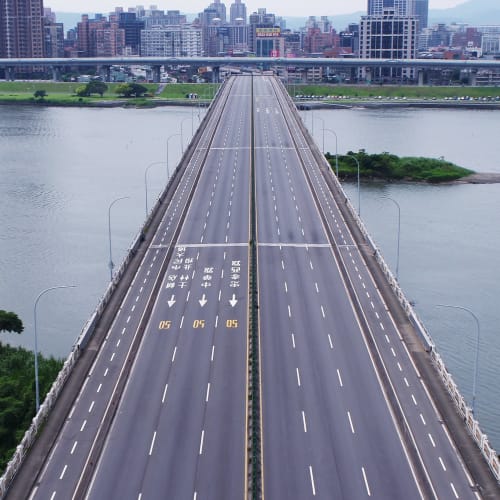Date | 11.15.2025-03.29.2026
Veune | Ludwig Museum – Museum of Contemporary Art, Budapest
Curator | Krisztina Szipőcs, Hu Yung-Fen
Organizers | Ludwig Museum – Museum of Contemporary Art, Budapest
Co-organizers | Department of Cultural Affairs, Taipei City Government, Taipei Culture Foundation, MoCA TAIPEI
Text-MoCA TAIPEI
The exhibition at the Ludwig Museum presents an overview of artistic developments on the island – and, indirectly, of the experiences and dilemmas that shape Taiwan’s past, present, and future.
The selection features the works of twenty internationally recognized artists and collectives who address important topics such as the cultural heritage of indigenous people, the lingering traces of colonization, Taiwan’s turbulent and often traumatic history at the turn of the 19th and 20th centuries, the evolution of modern Taiwanese identity and values, and the technology-based economy and society of the present and future. The exhibited works are extremely diverse in terms of genre: in addition to installations, interactive projects, videos, and animations using the most innovative technologies, visitors can also encounter archaic techniques, paper works, paintings, and sculptures.
Taiwan could be compared to a modern vessel navigating the open sea – equipped with the most advanced technology, yet repeatedly facing elemental forces and storms that drive it into dangerous waters and test its resilience. Although it may seem geographically remote to European audiences, the waves stirred by these tempests soon reach our own shores in today’s interconnected world – through trade conflicts, competition for resources, and ideological or military tensions. Within this shifting landscape, the preservation of cultural and natural values, critical reflection on history, and the building of a resilient, democratic, and diverse society based on solidarity are shared ideals that connect Taiwan and Europe.
The exhibition is organized around five interwoven thematic sections: “The Beautiful Island” – Indigenous heritage, natural environment and cultural traditions; “Parallel Histories” – the colonial past and its imprints; “Turbulent Histories and Traumas” – the upheavals of the 19th and 20th centuries; “The New Taiwanese Identity” – modern democracy and contemporary values; and “Taiwan Today and Tomorrow” – modernization, economic progress, and new technologies. These themes guide visitors from Taiwan’s past into its present, where layers of history and culture converge and project multiple visions of the future.
About Yuan Goang-Ming's works |
Everyday Maneuver was primarily shot in the half-hour period between 1:30 and 2:00 pm on the day of the drill. Five aerial cameras, placed above the middle of five main thoroughfares in Taipei, present a bird’s eye perspective. The cameras move in straight lines, creating footage that resembles a scanning of the urban landscape in surveillance. Taipei’s congested streets are instantly transformed into a deserted city- scape at the sound of air-raid sirens. The surreal spectacle is a part of Taiwan’s routine drills.
The 561st hour of occupation which records for the first time in Taiwan history, the students occupied Taiwan’s parliament for 585 hours in 2014.
The chamber place of the Legislative Yuan, in terms of painting, resembles a stable form of triangle composition, like half of the Colosseum. The vanishing point of perspective in this place is located on the lectern and the portrait of Sun Yet-Sen, below which the hours of students’ occupation are marked. The soundtrack of this documentary is derived from our national anthem, a song that symbolizes the eternity of our country. The artist slows down the playback speed of the anthem by 50%, turning the chamber into a church pervading a sacred and sacrificial atmosphere. As a result, time flies back and forth among the past, present, and future, and among abundance, decadence, and void.
About So Yo Hen's work |
Hua-Shan-Qiang is a video work that explores themes of religion, death, and the boundary between the real and the unreal. It incorporates elements and symbolic meanings from the traditional paper effigy (zhǐzhā) culture. Centered around the story of a man who self-immolates, the film guides the viewer through a journey into the underworld—a journey constructed upon collective imagination and compensations for the afterlife. For the living, the afterlife is often shaped by a sense of lack or unresolved regret. Through fire as a conduit, paper becomes a means of fulfillment in another realm. Yet this exchange between the living and the dead blurs not only the boundary between worlds, but also the clarity of identity itself.
About Chen Ching-Yuan's works |
Drawing Fold is a process-driven project that explores “folding” as both method and metaphor. “Fold” signifies both the creation of creases and the gathering of people. The painting exists between the gestures of sketching and the layered dimensions of time, memory, and perception. Through swift lines and thin veils of oil paint, each act of covering and rewriting leaves visible traces of its making, turning the image into a palimpsest where figuration and abstraction converge. Figures and scenes remain suspended in a state of indeterminacy, defying a singular narrative.
Chen Ching-Yuan’s paintings interweave documentary imagery with poetic imagination to create dreamlike scenes. Retaining traces of gesture and employing symbolic deconstruction and re-coding, his work persistently interrogates the mechanisms behind social and political narratives. These constructed tableaux reveal how personal and collective memories and histories are shaped and contested.




